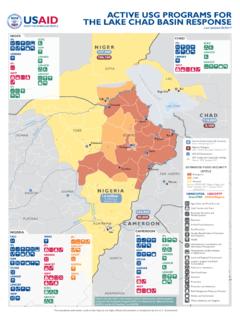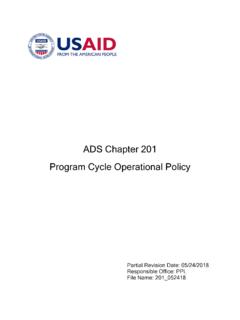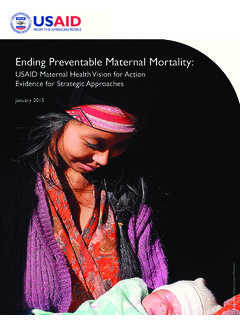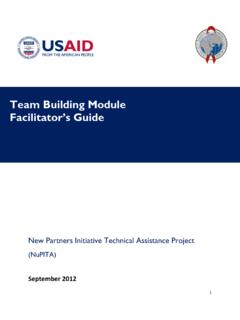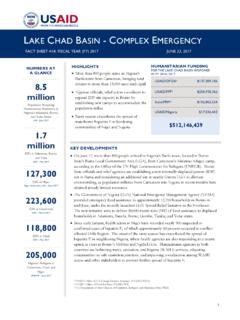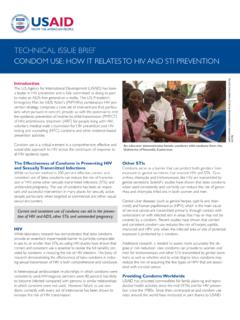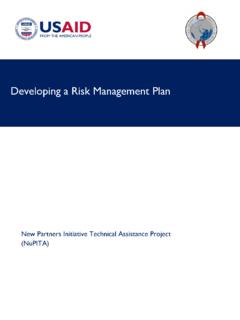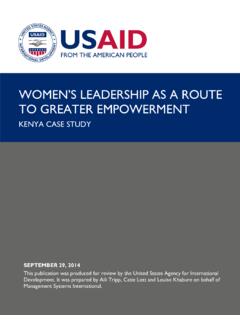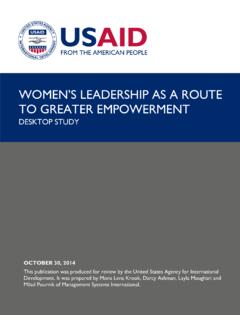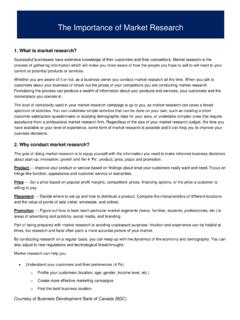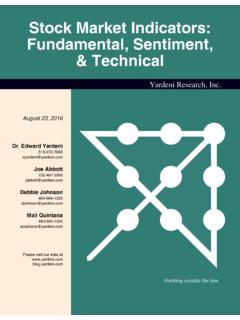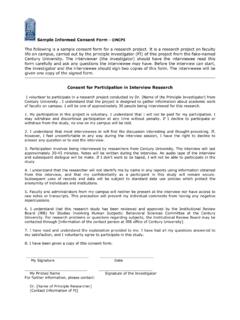Transcription of SUMMARY OF FINDINGS: MARKET RESEARCH REPORT
1 SUMMARY OF FINDINGS: MARKET RESEARCH REPORT Understanding Consumer Demand for Nutritious Food in Nyanza District, Rwanda June 2016 REPORT submitted by GAIN under USAID Grant # GHA-G-00-06-00002. For additional information, please contact: Jean Bosco Kazaroho Marketplace Manager, Rwanda Global Alliance for Improved Nutrition Kacyiru ST KG 563 Plot No 1489 Gasabo District Tel: +250 (0) 788 897 920 E: This REPORT is developed by the Global Alliance for Improved Nutrition (GAIN) for activities supported by the Agency for International Development, under the terms of Grant No. GHA-G-00-06-00002, as amended. The contents are the responsibility of GAIN and do not necessarily reflect the views of USAID or the United States Government. 1 2 SUMMARY of Findings: MARKET RESEARCH REPORT Understanding Consumer Demand for Nutritious Food in Nyanza District, Rwanda A SUMMARY of Marketing Insights from Consumer Interviews Nov 2015 - Jan 2016 Global Alliance for Improved Nutrition (GAIN) In collaboration with: James Lee Consultant to GAIN Theogene Dusingizimana School of Food Science & Tech.
2 , Univ. of Rwanda Umutoni Marie Francoise FATE Consulting, Kigali Funding by: UNITED STATES AGENCY FOR INTERNATIONAL DEVELOPMENT (USAID) June 2016 3 TABLE OF CONTENTS List of Tables .. 4 List of Figures .. 4 Abbreviations and Acronyms .. 4 Acknowledgements .. 4 1. Introduction .. 6 MARKET RESEARCH Methodology .. 6 Consumer Sampling Criteria .. 7 Limitations .. 9 2. What Foods are Consumed and Why? .. 10 Use of Commercial and Packaged Food Products .. 10 Value Added Products .. 10 Food Adulteration and Home Processing .. 11 Commercially Processed Foods and Ingredients .. 11 The Urban Diet .. 13 3. Where Foods are Purchased .. 14 Types of Food Vendors .. 14 Neighborhood Kiosks .. 14 Open-Air Markets .. 14 MARKET Stalls .. 15 Alimentations .. 15 Direct Purchases from Farmers .. 16 Relationships with Rural Producers.
3 16 Trust .. 17 Refrigeration .. 18 4. Consumer Knowledge and Preferences .. 19 Consumption of Fruit .. 19 Perception of the Nutritional Attributes of Specific Foods .. 19 Convenience .. 20 5. Observations on Dietary Composition .. 21 Blended Cereal Porridge .. 22 Locally Processed Yogurt .. 22 Cow s Milk .. 22 Small Dried Fish (Indagara) .. 22 Groundnut Powder .. 23 Green Leafy Vegetables .. 23 Maize Flour .. 24 Food Restrictions .. 24 6. Conclusions and Recommendations .. 25 The Packaged/Natural Binary .. 25 Rural Ideals and the Urban Diet .. 25 Locating Convenience .. 26 Bean Flour .. 26 Yogurt .. 26 Groundnut Processing .. 26 4 Small Dried Fish (Indagara) .. 27 Fortification Opportunities and Barriers .. 27 Behavior Change Communication and Nutrition Education .. 28 Yogurt .. 28 Sweet Potato.
4 28 Groundnut Flour .. 29 Oil .. 29 7. References .. 30 8. Annexes .. 31 Annex 1: SUMMARY on Food Dimension Ratings .. 31 Annex 2: Consumption of Individual Food Items .. 32 Annex 3: Food Consumed by Feeding Occasion .. 34 Annex 4: Urban vs. Peri-Urban Diet (24-Hour Recall) .. 40 Annex 5: Urban vs. Peri-Urban Diet (7-Day Recall) .. 42 LIST OF TABLES Table Ubudehe Classification Criteria .. 7 Table Respondent Occupations .. 8 Table Respondent Education 8 Table Select Household Characteristics .. 9 Table Vendor Typology .. 16 Table Range of Foods Present in 24hr Recall .. 21 LIST OF FIGURES Figure Home 11 Figure Resistance to Factory Foods .. 12 Figure A Neighborhood Kiosk .. 14 Figure Advertising Displayed at a Nyanza "Alimentation" .. 15 Figure Hazards of Meat and Oil.
5 19 Figure A Rwanda-made Blended Porridge Flour .. 21 Figure Typical Daily Kiosk Purchase .. 23 ABBREVIATIONS AND ACRONYMS CHW Community Health Worker FES Focused Ethnographic Study IYC Infant and Young Child MNF Marketplace for Nutritious Foods, Rwanda QC/QA Quality Control/Quality Assurance ACKNOWLEDGEMENTS The scope of this work was established and refined through initial discussions with the Director of GAIN s Agriculture for Nutrition Program, Bonnie McClafferty; GAIN s Agriculture for Nutrition Senior Manager, Daniel Alberts; Marketplace Manager, Rwanda, Jean Bosco Kazaroho; and Laurie Pickard and Silver Karumba of the USAID Mission in Kigali. Independent Advisor Gretel Pelto provided advice and direction to the consultants at critical junctures along the way. She and Christine Hotz of GAIN s Monitoring, Learning and RESEARCH division both offered valuable comments on a draft of this document.
6 Agriculture for Nutrition 5 Program Assistant, Araba Sapara-Grant, helped to prepare the final document. The authors wish to offer their particular gratitude to the individuals in Nyanza district who gave their time and opinions during the interview process, and to the staff of the Ministry of Health in Mukingo and Busasamana, who smoothed their entry into these communities. Special thanks are also owed to GAIN s Agriculture for Nutrition Associate, Teale Yalch, whose consistent administrative support allowed this work to proceed without obstacles. 6 1. Introduction This SUMMARY REPORT presents outcomes from MARKET RESEARCH interviews conducted with consumers in Nyanza District on behalf of the Marketplace for Nutritious Foods, Rwanda from December 2015 to January 2016.
7 The Marketplace for Nutritious Foods intends to support Rwandan businesses to accelerate their capacity for production and marketing of nutritious foods. The objective of the Nyanza consumer interviews was to complement GAIN s landscaping of the business environment with information on demand-side aspects of the food system including what foods people are buying, where they are buying them, and what the important factors governing food purchases appear to be. MARKET RESEARCH Methodology: For this MARKET RESEARCH we chose to model our approach partly on a method that has been used by GAIN elsewhere to investigate child feeding behaviours and attitudes, the Focused Ethnographic Study, or FES [Pelto et al 2013; Pelto and Armar-Klemesu 2014]. This involves extended (typically about 3 hour) interviews with a small sample of informants.
8 FES interviews are normally conducted in 2 phases: in the first phase key informants are consulted on a range of questions, including typical feeding behaviours, challenges, the range of foods available, and the way they are prepared and consumed. A second phase then documents actual consumption and attitudes towards a specific list of foods through the prism of select dimensions such as food availability, affordability, or healthiness. The power and relevance of phase 2 interviews is sharpened because they are designed around the concerns, behaviours and vocabularies revealed in phase 1. For our MARKET RESEARCH interviews, this two-stage methodology was preserved. However, the need to capture respondents opinions and behaviours as consumers (and not only as mothers or caregivers) and also to produce results quickly to inform the MNF project launch required modifications to the FES methodology, which was shortened and altered in several ways.
9 Phase 1 interviews -- normally performed, recorded and transcribed before being analysed remotely -- were instead analysed in the field daily, without audio recording, based on handwritten notes, allowing phase 2 to commence sooner. And whereas phase 1 interviews are normally restricted to individual key informants, the Nyanza interviews commenced with several focus groups, which allowed a broad picture to be rapidly established before follow-up interviews were arranged with individual key informants. For phase 2, modifications included more in-depth questions on the sourcing of foods, covering opinions about types of vendor, and the procurement of foods secured direct from farmers. Interview topics that we drew from the FES included a 24-hour recall of foods consumed by children; a 7-day recall of foods consumed by the family; and a rating task in which respondents are asked to rate a series of food items on 5-point scale according to specific attributes or dimensions.
10 The dimensions we employed in our consumer interviews included ones usually used in the FES including cost/affordability, availability, and 7 healthiness, as well as novel ones identified during key informant interviews, including safety and authenticity. Consumer Sampling Criteria: Nyanza District was selected as the location for the consumer interviews because most of the district has been classified as highly reliant on markets, while at the same time most of the district falls in the middle range on the scale of food insecurity (Government of Rwanda 2012). Sampling was originally intended to encompass only residents of peri-urban Nyanza, on the assumption that this setting would best represent consumers who were participating in the formal economy, but were nevertheless not so wealthy as to be unrepresentative of Rwanda s largely rural population.

